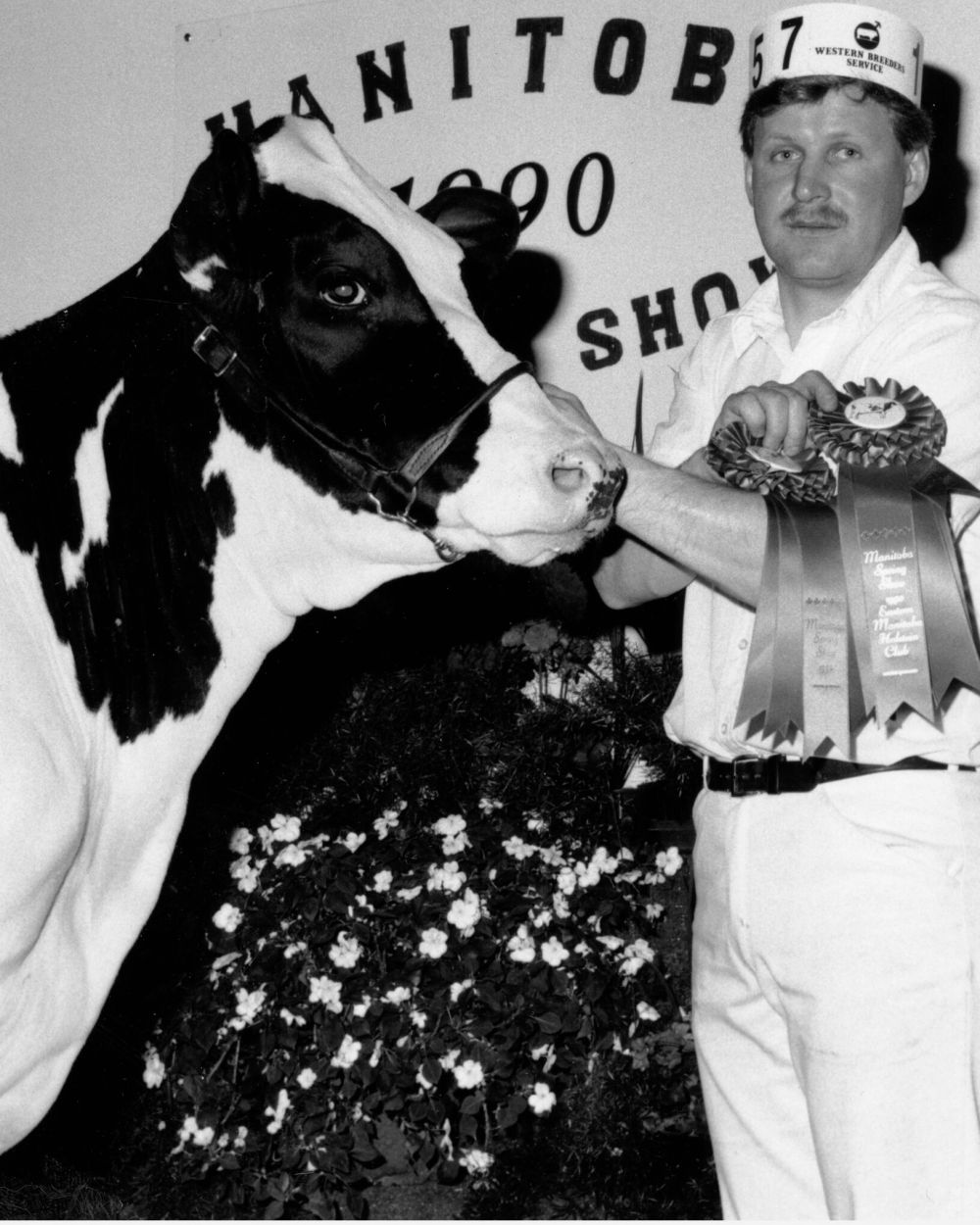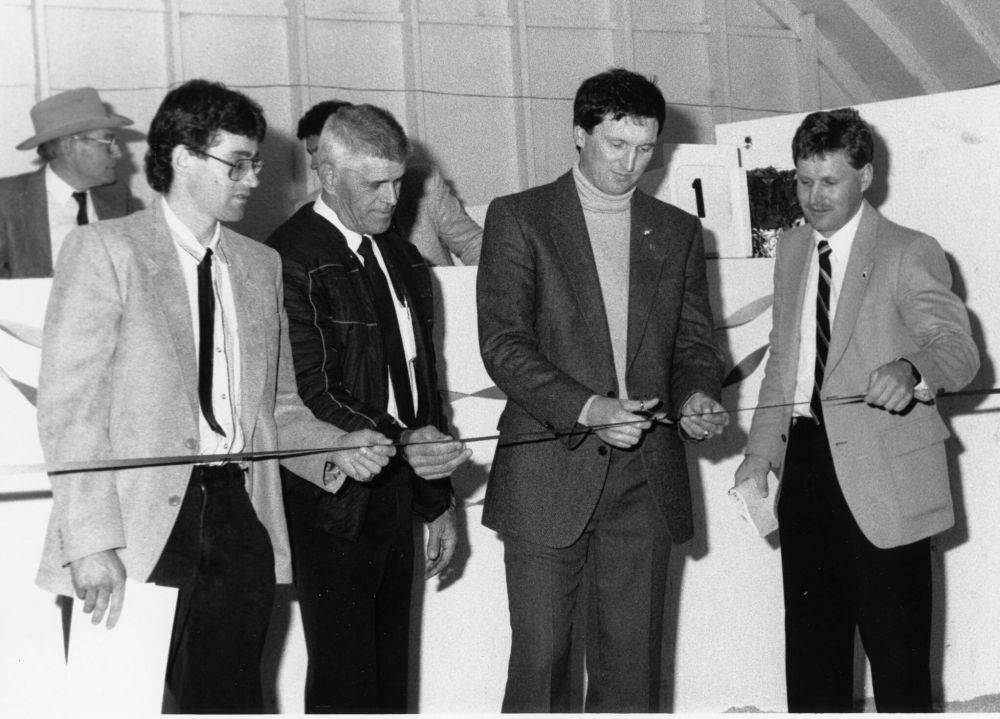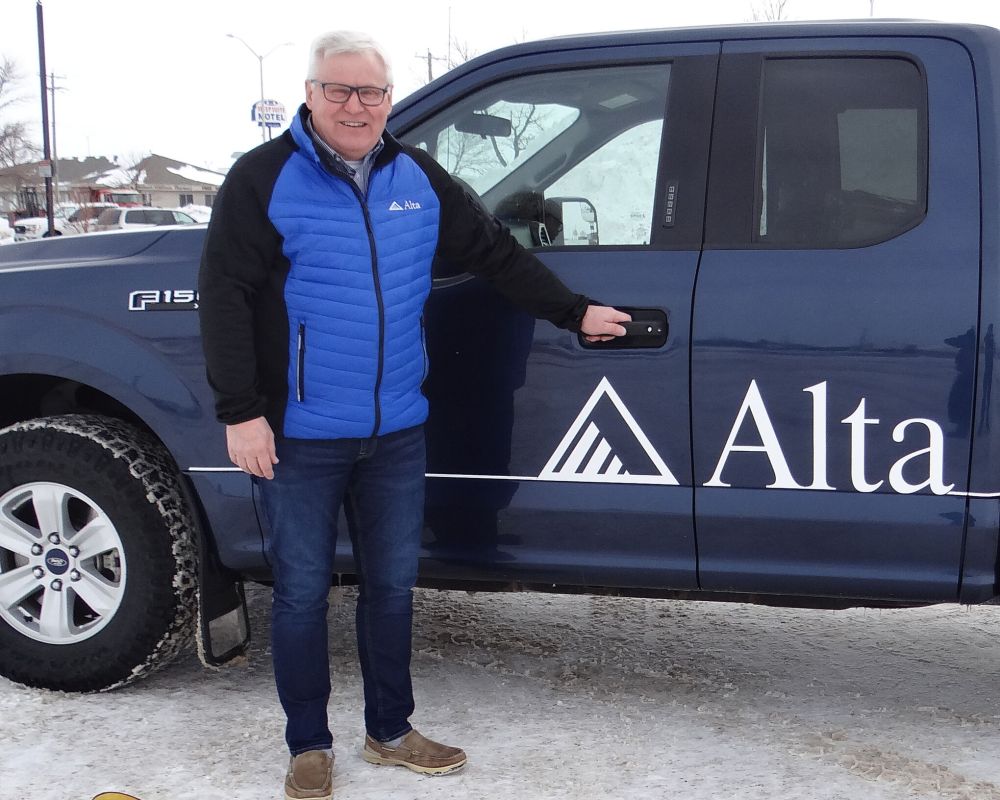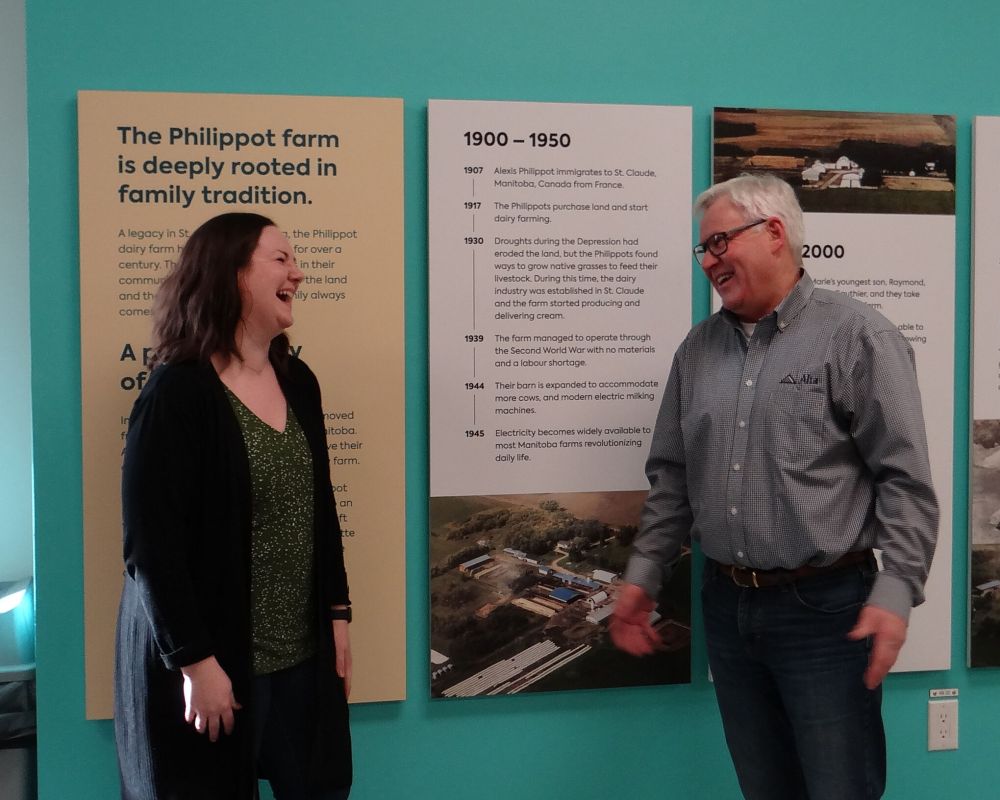Art Peters retiring after lifetime career in dairy
Advertisement
Hey there, time traveller!
This article was published 15/04/2022 (1218 days ago), so information in it may no longer be current.
There may be a small grey area in Art Peters’ black and white world, but if there is, it probably has more to do with his age than anything regarding the breed of dairy cattle he has spent most of his life milking, breeding, showing and selling.
For Art Peters, when it comes to dairy cattle it has always been Holsteins, Holsteins, Holsteins, and along the way he and his brother Richard managed to achieve the goal of a lifetime, when a cow with the Hanson prefix achieved the pinnacle of success as Grand Champion at the 1989 World Dairy Expo in Wisconsin, and a year later was named Grand Champion at the Toronto Royal.
Hanson Holsteins had sold Hanson Prestar Mona Lisa for big money as a calf, Peters says with pride, recalling this highlight of his lifelong career in dairy.

Peters retires April 15 after 25-years with Alta Genetics, a company he admired when he was operating Hanson Holsteins with his brother Richard. He joined the company as district sales manager two summers after the brothers sold their herd in 1996.
Art didn’t exactly apply for the job, but in earlier dealings with Alta, he had told them theirs was the kind of company he would like to work with….if he ever quit hands-on dairy production.
When Art and Richard decided to sell the herd in 1996, nearly two decades after they bought the Randolph area farm, Alta came calling.
But Art didn’t always want to be a dairy farmer. In his youth, he was a pretty fair hockey player and had aspirations for a career in physical education.
When he came back from attending high school in Gretna, in 1971, he was two subjects short of graduating and, to put it mildly, his dad was not impressed. The Herb, in Herbsigwil, always stressed education for his sons and a career on the family farm was always a second option.
At the urging of his father, and still wanting to be a phys-ed teacher, Art went to the University of Winnipeg in the fall of 1971 to complete his high school studies, but lasted only two weeks and came home to attend Steinbach Collegiate on a part-time basis. For the rest of that school year, he was busy with two of his main interests.
“Life was all hockey and milking cows.”
In the spring of 1972, Art was playing on the high school hockey team, on a junior B hockey team and with the Steinbach Huskies, all at the same time.
His father was still pushing education, and in the fall of 1973, Art went to the University of Manitoba, enrolled in the Agriculture Diploma course.
He had been invited to try out for the U of M varsity hockey team but had broken two fingers playing football for the Steinbach Wheelers that fall, and that finished that. But even that cloud had a silver lining.

“Because I had been out of school for two years, the government paid me to attend university.”
Graduating from the U of M, Art took on a job with the Department of Agriculture at Beausejour as a livestock specialist. After doing that for a couple of years, further promotion would mean a return to University to get a degree, to go along with his Diploma in Agriculture.
Art’s brother, Richard, had just finished his first year of university at this time, and was really interested in buying a farm of his own. There was the option of joining the family operation, of course, but he was more interested in creating two smaller family farms, rather than one big one. Richard was interested in milking registered cattle and improving the genetics of his herd.
The opportunity for the brothers to go into partnership and buy Twin K Dairy came in the fall of 1977, when one of the partners in that farm was killed in a farm accident, and the farm was put up for sale.
There were 65 cows in the tie stall barn, at Twin K Dairy, near the Chortitzer Church at Randolph, where Art and Richard grew up.
Needing a farm name and a prefix to register their home-bred Holsteins, Art and Richard adopted the farm name Hanson Holsteins and all breeding cows would then be registered with the Hanson prefix. (Although Art is very much a hockey fan, he denies that the farm name was inspired by the hockey-playing Hanson Brothers in the movie Slapshot.)
The shared ambition of the brothers was to breed the greatest cows in the world, and a dozen years later, at World Dairy Expo, their Hanson Prestar Mona Lisa fulfilled that dream.
Immediately after buying the farm in 1977, the Peters brothers changed over the whole herd, bringing in higher-end registered Holsteins and embarking on their own breeding program.
At Alta Genetics, Holsteins of course are the main interest for Art, although the company sells other dairy breeds, like Brown Swiss and Jersey. Holsteins still account for 90 percent of sales.

The Peters brothers were 24 and 19 when they bought the farm and Art credits his Steinbach Huskies hockey coach, Jake Fries, with playing a big role in getting that deal done. Farm Credit Corporation had a maximum limit on financing and the brothers needed an additional $30,000.
“The Royal Bank manager said yes, with no collateral and a locked in interest rate.”
Tremendous partnership
Both brothers agree their partnership has been tremendous. Both were interested in showing Hanson Holsteins off the farm and taking cattle to shows.
While Richard was more into taking cattle to shows, Art was able to take the time to pursue his interest in the politics of dairy and only had to show up on show days to lead cattle.
Peters points out there is more to dairy farming than just milking cows. For Art, it was dairy politics and he served a decade as a director and two years as president of the Holstein Association of Manitoba.
It is important not to just live in the barn, Peters says, and that led to decisions to hire help and keep the operation less mechanized than other dairies of a similar size.
Richard loved to show cattle, and the additional labour at Hanson Holsteins gave him the opportunity to take in shows in other provinces and in the United States.
Art says if there had been robots to milk the cows in 1996, they may have reconsidered getting out of dairy at that time. But robots didn’t really come to the province until a decade later. Ironically, in his new off-farm career, Richard has played a big role in making that happen.

Richard was always the more hands-on manager when the partners started their sales barn, Art says.
“Richard was in the back in coveralls and I was up front dressed in shirt and tie.”
The brothers’ sales barn, on a farm they bought in 1985, was one-half-mile north of Provincial Road 311 on Provincial Road 206, which they bought in 1985.
For years, they held dispersals, consignments, and annual sales between August and October. Some were in the sales barn, some on farms, and some at the spring show and sale in La Broquerie.
The largest, probably, was in 1996, when Hanson Holsteins held a dispersal sale of their own herd of 207 head at La Broquerie, in the building next to the La Broquerie Arena.
The partners were getting out of milk production and 160 bidders from five states, and as many Canadian provinces, were on hand to help them on their way.
Prices at the sale were better than expected, showing that embarking on an embryo transplant breeding program, in its infancy in 1983, had paid dividends for the Peters brothers.
At the time of the dispersal, the idea was to get out of milk production to concentrate on marketing. The two had been producing top line, dairy show winning, prize Holsteins for nearly two decades and the March, 1996 sale netted over $400,000 for their efforts.
When they decided the sales barn was not turning into a profitable venture, the brothers both took two summers off before pursuing new careers, but neither strayed far from the dairy industry.

Richard went to work for Penner Farm Services, selling full dairy barn packages and Art accepted a position with Alta Genetics. The company out of Western Canada was started by Doug Blair and later purchased by a Netherlands family.
Part of his duties with Alta Genetics was holding seminars and meetings, and acting as a consultant on reproduction and calf-raising.
“Reproduction is the key to success of every dairy operation. A dairy, to be successful, needs to have 10 percent of the milking herd calving every month. If there are 1,000 cows, there needs to be between 100 and 125 calves every month, to keep milk production at a level to meet quota.”
That message will continue to be delivered by Richard’s son Shawn, who left a job with Penner Farm Services in 2018 to join Alta Genetics, working with his uncle Art.
Art welcomed his nephew’s decision to make that career change.
“It has allowed me to slow down.”
